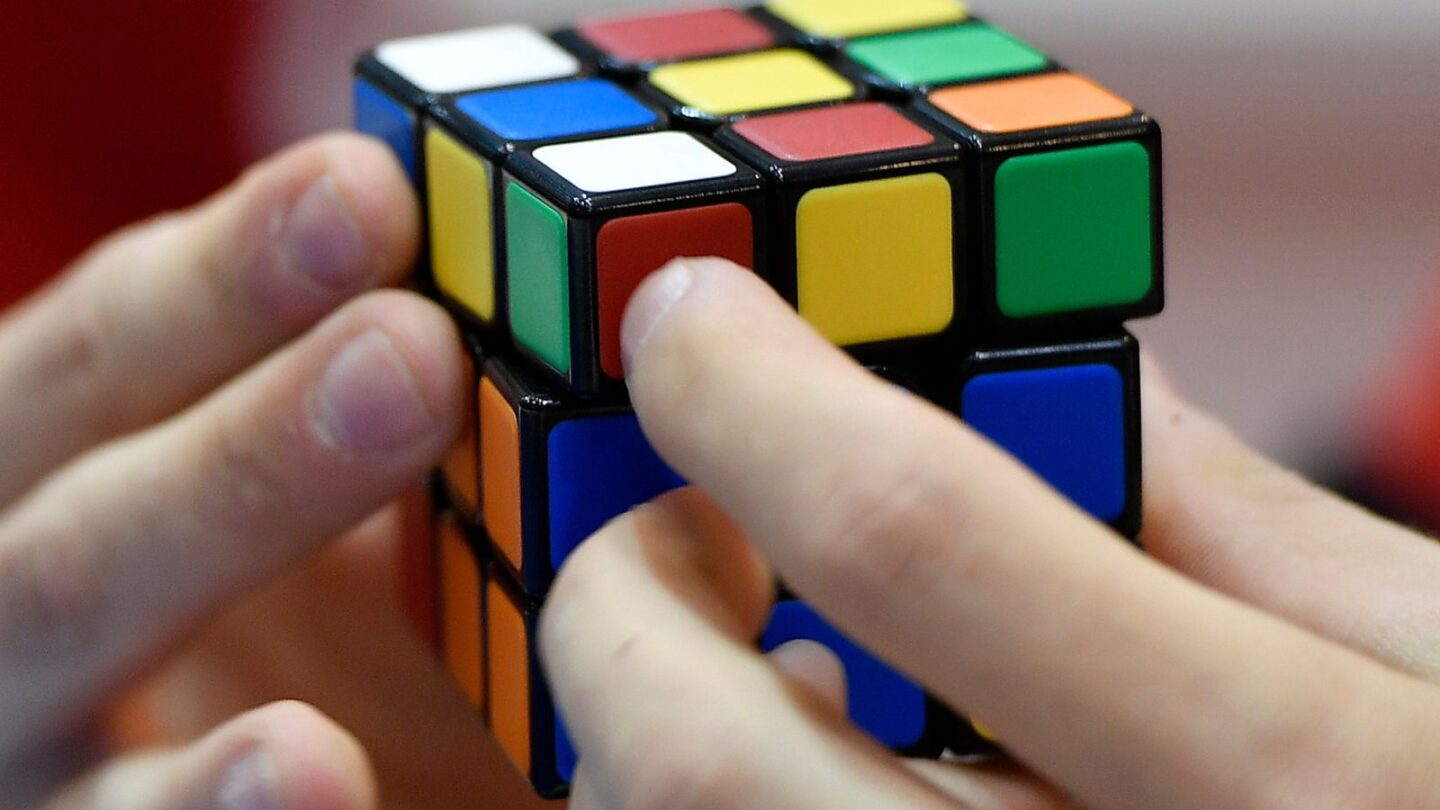Fancy algorithms capable of solving a Rubik’s Cube have appeared before , but a new system from the University of California, Irvine uses artificial intelligence to solve the 3D puzzle from scratch and without any prior help from humans—and it does so with impressive speed and efficiency.
copyright by gizmodo.com
 New research published this week in Nature Machine Intelligence describes DeepCubeA, a system capable of solving any jumbled Rubik’s Cube it’s presented with. More impressively, it can find the most efficient path to success—that is, the solution requiring the fewest number of moves—around 60 percent of the time. On average, DeepCubeA needed just 28 moves to solve the puzzle, requiring 1.2 seconds to calculate the solution.
New research published this week in Nature Machine Intelligence describes DeepCubeA, a system capable of solving any jumbled Rubik’s Cube it’s presented with. More impressively, it can find the most efficient path to success—that is, the solution requiring the fewest number of moves—around 60 percent of the time. On average, DeepCubeA needed just 28 moves to solve the puzzle, requiring 1.2 seconds to calculate the solution.
Sounds fast, but other systems have solved the 3D puzzle in less time, including a robot that can solve the Rubik’s cube in just 0.38 seconds. But these systems were specifically designed for the task, using human-scripted algorithms to solve the puzzle in the most efficient manner possible. DeepCubeA, on the other hand, taught itself to solve Rubik’s Cube using an approach to artificial intelligence known as reinforcement learning.
“Artificial intelligence can defeat the world’s best human chess and Go players, but some of the more difficult puzzles, such as the Rubik’s Cube, had not been solved by computers, so we thought they were open for AI approaches,” said Pierre Baldi, the senior author of the new paper, in a press release . “The solution to the Rubik’s Cube involves more symbolic, mathematical and abstract thinking, so a deep learning machine that can crack such a puzzle is getting closer to becoming a system that can think, reason, plan and make decisions.”
Indeed, an expert system designed for one task and one task only—like solving a Rubik’s Cube—will forever be limited to that domain, but a system like DeepCubeA, with its highly adaptable neural net, could be leveraged for other tasks, such as solving complex scientific, mathematical, and engineering problems. What’s more, this system “is a small step toward creating agents that are able to learn how to think and plan for themselves in new environments,” Stephen McAleer, a co-author of the new paper, told Gizmodo.
Reinforcement learning works the way it sounds. Systems are motivated to achieve a designated goal, during which time they gain points for deploying successful actions or strategies, and lose points for straying off course. This allows the algorithms to improve over time, and without human intervention.
Reinforcement learning makes sense for a Rubik’s Cube, owing to the hideous number of possible combinations on the 3x3x3 puzzle, which amount to around 43 quintillion. Simply choosing random moves with the hopes of solving the cube is simply not going to work, neither for humans nor the world’s most powerful supercomputers. […]
read more – copyright by gizmodo.com
Thank you for reading this post, don't forget to subscribe to our AI NAVIGATOR!


Fancy algorithms capable of solving a Rubik’s Cube have appeared before , but a new system from the University of California, Irvine uses artificial intelligence to solve the 3D puzzle from scratch and without any prior help from humans—and it does so with impressive speed and efficiency.
copyright by gizmodo.com
Sounds fast, but other systems have solved the 3D puzzle in less time, including a robot that can solve the Rubik’s cube in just 0.38 seconds. But these systems were specifically designed for the task, using human-scripted algorithms to solve the puzzle in the most efficient manner possible. DeepCubeA, on the other hand, taught itself to solve Rubik’s Cube using an approach to artificial intelligence known as reinforcement learning.
“Artificial intelligence can defeat the world’s best human chess and Go players, but some of the more difficult puzzles, such as the Rubik’s Cube, had not been solved by computers, so we thought they were open for AI approaches,” said Pierre Baldi, the senior author of the new paper, in a press release . “The solution to the Rubik’s Cube involves more symbolic, mathematical and abstract thinking, so a deep learning machine that can crack such a puzzle is getting closer to becoming a system that can think, reason, plan and make decisions.”
Indeed, an expert system designed for one task and one task only—like solving a Rubik’s Cube—will forever be limited to that domain, but a system like DeepCubeA, with its highly adaptable neural net, could be leveraged for other tasks, such as solving complex scientific, mathematical, and engineering problems. What’s more, this system “is a small step toward creating agents that are able to learn how to think and plan for themselves in new environments,” Stephen McAleer, a co-author of the new paper, told Gizmodo.
Reinforcement learning works the way it sounds. Systems are motivated to achieve a designated goal, during which time they gain points for deploying successful actions or strategies, and lose points for straying off course. This allows the algorithms to improve over time, and without human intervention.
Reinforcement learning makes sense for a Rubik’s Cube, owing to the hideous number of possible combinations on the 3x3x3 puzzle, which amount to around 43 quintillion. Simply choosing random moves with the hopes of solving the cube is simply not going to work, neither for humans nor the world’s most powerful supercomputers. […]
read more – copyright by gizmodo.com
Thank you for reading this post, don't forget to subscribe to our AI NAVIGATOR!
Share this: